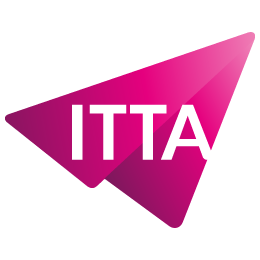Home > Trainings > Development > Data Science > Deep Learning with TensorFlow 2.0
TensorFlow is a complete open-source platform for machine learning. The course leverages the Keras API to write clean, fast code. You apply best practices from day one. You avoid common pitfalls in AI projects. You design, train, and evaluate robust models. You set up a reliable, reproducible environment. You validate your choices with meaningful metrics. You make better decisions, faster.
This training focuses on TensorFlow 2.0 and the Keras API. The goal is autonomy on real-world cases. You leave with a clear, reusable framework. You strengthen your Deep Learning foundations. By the end of the course, you can move from idea to model. You structure your experiments rigorously. You accelerate iteration and safeguard quality. The TensorFlow 2.0 course prepares you to deliver under real production conditions.
Module 1: Introduction to neural networks
Module 2: Setting up the working environment
Module 3: Minimal example – your first machine learning algorithm
Module 4: TensorFlow – An introduction
Module 5: Going deeper: Introduction to deep neural networks
Module 6: Backpropagation. A peek into the Mathematics of Optimization
Module 7: Overfitting
Module 8: Initialization
Module 9: Gradient descent and learning rates
Module 10: Preprocessing
Deep Learning delivers real gains when the method follows. This course offers a clear and pragmatic approach. You start from a precise, measurable business need. You choose stable and relevant metrics. You then turn these goals into a simple, reproducible pipeline.
We connect theory to concrete decisions. You compare a linear baseline with a deep network. You justify the gap with numbers. You adopt an experimental mindset useful every day. This Deep Learning training helps you think like a practitioner.
Label quality often sets the performance ceiling. We cover data audits and simple checks. You detect leakage between training and test. You handle rare classes without distorting metrics. You adopt a clean and consistent split.
You standardize variables with rigor. You handle missing values without breaking distributions. You encode categories safely. You document every choice so it can be replayed. This discipline makes results comparable and credible.
TensorFlow 2.0 simplifies the move from concept to prototype. You use eager execution to understand each step. You leverage the Keras API to structure your models. You set up useful, non-intrusive callbacks. You save at the right time and avoid losing progress.
You use tf.data to build a robust data flow. You separate preprocessing for training and inference. You prepare balanced batches to stabilize learning. You watch input latency that can throttle computation. You gain both time and stability.
A well-tuned learning rate often beats a complex architecture. You learn to schedule rates without guesswork. You know when to decrease, freeze, or warm up. You measure real effects on loss and generalization. You avoid endless loops of random tweaks.
We also address unstable gradients. You recognize signs of explosion or vanishing. You adapt initialization to network depth. You combine normalization and regularization with care. You achieve a smoother, more readable descent.
Overfitting remains the main enemy. You set up clean, traceable validation. You use early stopping when it makes sense. You try simple, effective regularization strategies. You aim for robustness, not isolated peak scores.
You compare results against a strong baseline. You discuss gaps with honesty. You accept complexity only when it pays off. You document known model limits. This transparency eases adoption and maintenance.
Many prototypes fail at integration. We prepare deployment from day one. You export models in the recommended format. You anticipate version and dependency constraints. You think about inference compatibility during training.
You explore practical options by context. You plan conversion to lightweight targets when needed. You address security, quotas, and data governance. You design a realistic, documented release path. This rigor reduces late surprises.
Reproducibility is not only academic. It saves weeks of work. You fix random seeds when possible. You log hyperparameters and versions. You store metrics and artifacts together. You simplify reviews and handovers between teams.
You also learn to write simple model cards. You state intended use and known limits. You flag potential biases and unsuitable contexts. You increase trust around the project. This habit becomes a team advantage.
You leave with a clear, tested method. You can frame a problem, prepare data, and train a model. You use TensorFlow 2.0 and the Keras API pragmatically. You read the signals of healthy training. You know when to stop, iterate, or simplify.
This TensorFlow 2.0 training targets responsible autonomy. You gain speed without sacrificing quality. You build useful, sustainable models. You improve decisions with solid measurements. You prepare the next steps on durable foundations.
Can I take this course without advanced math?
Yes. Targeted refreshers are enough. Key points are explained with short examples.
What does the industrialization part cover?
Export, model formats, metric tracking, and practical deployment guidelines. All handled pragmatically.
Which use cases are prioritized?
Supervised classification and regression. You build reusable and scalable prototypes.
How is this Deep Learning training different?
It links concrete decisions to measurable results. It favors a reproducible, transferable method.

Nous utilisons des cookies afin de vous garantir une expérience de navigation fluide, agréable et entièrement sécurisée sur notre site. Ces cookies nous permettent d’analyser et d’améliorer nos services en continu, afin de mieux répondre à vos attentes.
Monday to Friday
8:30 AM to 6:00 PM
Tel. 058 307 73 00
ITTA
Route des jeunes 35
1227 Carouge, Suisse
Monday to Friday, from 8:30 am to 06:00 pm.